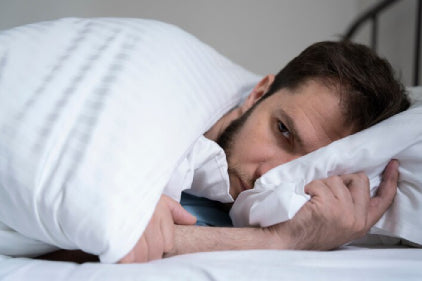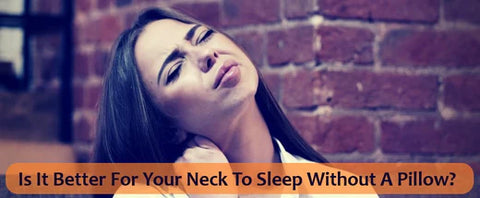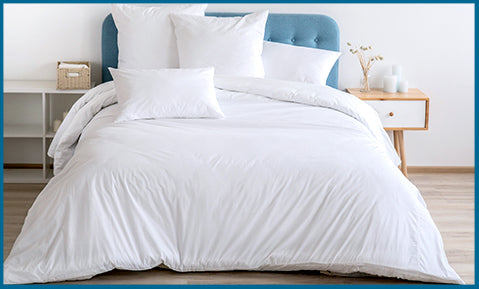
People often say ‘They sleep like a baby.’ But what exactly does it means? Babies sleep soundlessly, peacefully, and comfortably whereas it is opposite when we talk about adults. Babies are about comfort, warmth, and a mother’s love, and care. Sleep is very important for a baby’s health and wellness.
According to the American Academy of Pediatrics (AAP), babies must sleep on their backs. When babies sleep on their bellies, they receive less oxygen and release less carbon dioxide. In other words, an infant can only breathe again while lying on their bellies through a tiny pocket of bedding that has been pulled up over their nose.
The baby's crib mattress must be safety approved and should always be covered by a fitted sheet to provide pleasant sleep. Never put your infant to sleep on a soft surface, such as a pillow, a comforter, or a sheepskin. The sleeping environment should be tidy and free of soft things, toys, pillows, blankets, quilts, and crib bumpers. Keep your baby's sleeping space close by but apart. If the baby is sleeping in the same room as you, your infant must not share a bed, couch, or recliner with adults or other kids. Keep an eye on the room's temperature; it shouldn't be too warm or too cold. Furthermore, keep your baby away from open windows, draughty areas, and air conditioning or heating vents.
But this is not the case always.
Your infant, as well as the rest of your family, will find colds to be extremely annoying. Along with making it far more difficult for your infant to breathe and feel secure, their increased fussiness and lack of sleep can essentially wreck the peace in your home.

It's a pleasant relief when your baby is entirely healthy again because it requires more parental care and special focus on strengthening their immune system.
The best thing to do is to have a solid recovery strategy and learn to recognize when your child is getting cold so you can lessen its impact and duration. Since preventing a cold is impossible because babies are susceptible to numerous types of respiratory infections and over 200 different viruses, this is the best thing to do.
While you might not be able to prevent your child from coming into contact with people who are infected with the virus or from entering a space where objects or surfaces have been contaminated, you can lessen their discomfort when they have a cold and help them recover so that sniffles and a mild cough don't turn into a nightmare of sleepless nights lasting six weeks! Nasal congestion can cause your kid to have a dry mouth and throat in addition to making it more difficult for him to breathe through his nose. There may be the greatest sleep position for a congested baby because of the agitated, unhappy nights and nap times that result from this.
Even when they are congested, babies should always sleep on their backs since it is the most secure position. In actuality, babies under 1-year-old should always sleep on their backs. Even a gassy baby can sleep in this position comfortably. But don't worry; there are other ways to help your infant get comfortable while sleeping and relieve congestion.
Which sleeping posture will help the baby sleep in their cold?
When your baby sleeps flat on her back, her body has harder time removing mucus, which leads to an uncomfortable mucus buildup in her sinuses. The safest resting posture for infants under 1-year-old is on their backs, according to the American Academy of Pediatrics. A colicky baby is a single exception to this rule. A colicky baby does the best sleeping on his side since it helps him to relax. But once your infant stops
Everybody has experienced nasal congestion, which causes us to sleep with our mouths open and awaken with a painful throat, dry mouth, and crusty nose. While we adults are aware that congestion will eventually go away, your baby will probably be a little whinier about it, especially when it's time for them to fall asleep. But once the baby asleep after all fussing making sure to put him back on his back.
So, what can you do? Which sleeping position will help the baby with stuffy nose sleep with less discomfort?
While you shouldn't put your baby to sleep on their stomach or side, you can consider switching their cot for a sleeping arrangement that enables them to do so safely, such as:
- A bouncer
- A swing
- A wrap that positions her against your body
It is more pleasant for your baby to fall asleep in an inclined or upright position since mucus can more easily drip down the mouth in these positions. However, leaving a sleeping child unattended in a swing or bouncer is not advised. If you can no longer watch your baby after she falls asleep, gently lay her in her crib on her back so she can keep dreaming.
Lift their head: For a baby sleeping with a cold, use extra pillows to raise their head and shoulders as this will help the congestion drain down. When your baby has a cold, the best default posture for them to be in is upright. This facilitates breathing improvement and congestion relief. The most essential benefit is that it aids in giving them much-needed rest.
Consider carrying your infant on your chest while they are sleeping to do this. The idea is to keep your baby upright so that fluid may naturally drain from the ears instead of building up and perhaps causing an ear infection.
What other steps can be taken to help your baby fall asleep with stuffy nose?
- Using saline drops: Use of traditional saline drops or saline spray is the best technique to treat nasal congestion in infants, together with a nasal aspirator or suction bulb. Any heavy mucus clogging their nostrils will be cleared by doing this. Place the nasal aspirator's tip in your infant's nostril and sucking pressure on the other end until mucus emerges. If a bulb syringe is being used, squeeze the bulb before inserting the tip into your child's nostril and then let it go. This will remove any nasal mucus that might be preventing your infant from breathing properly.
- Create a nightcap for them: Making babies a warm beverage before bedtime, such as honey and lemon to relieve a sore throat, is a well-known home cure for colds in newborns, depending on whether they are mature enough. It is a fantastic way to get a baby with a cold to sleep through the night!
- Help your babies to breath: Help your babies breathe easily by applying a medicated vapour ointment to their chest and putting a few drops of eucalyptus oil on their pillow or a handkerchief to assist them remove their congestion. This way certainly helps the infants in getting some sleep at night when they are suffering from cold and congestion. For toddlers under two, a saltwater nasal spray or drops helps clear the nose.
- Allow them to rest: It's undeniable that plenty of kids try to sneak in a day under the covers even when they feel just great (look out for radiator marks on your kid's suddenly heated forehead!). But if they actually have symptoms of a cold, such as a sore throat, nasal congestion, sneezing, runny nose, and watery eyes, they must be given proper treatment and they need to rest or else they will feel more exhausted than they usually are.
But as the quote goes, Prevention is better than cure, boost your child’s immune system by feeding them with food rich in vitamins and nutrients, especially Vitamin C as it helps the child to fight cold.
Is your baby's nose stuffy at night?
If yes, then the reason may be cold, influenza or some other medical issue. But if the nose of your baby stays stuffy at night on a regular basis, then you should definitely consult a doctor.
Side sleeping is the best sleeping position for a baby with stuffy nose. Sleeping on the back can lead to congestion and wake your baby up, and stomach sleeping can be outright dangerous for babies.












